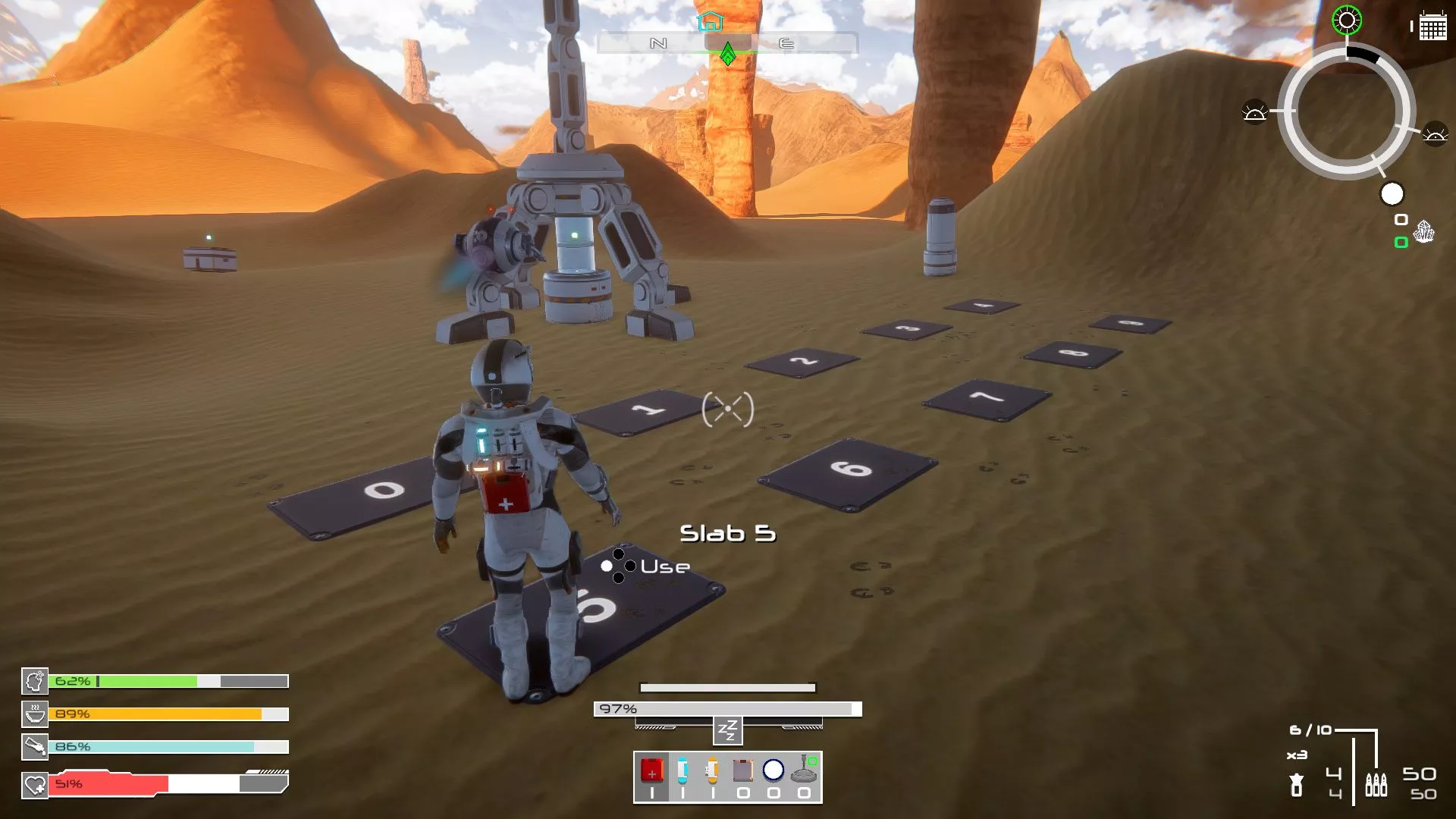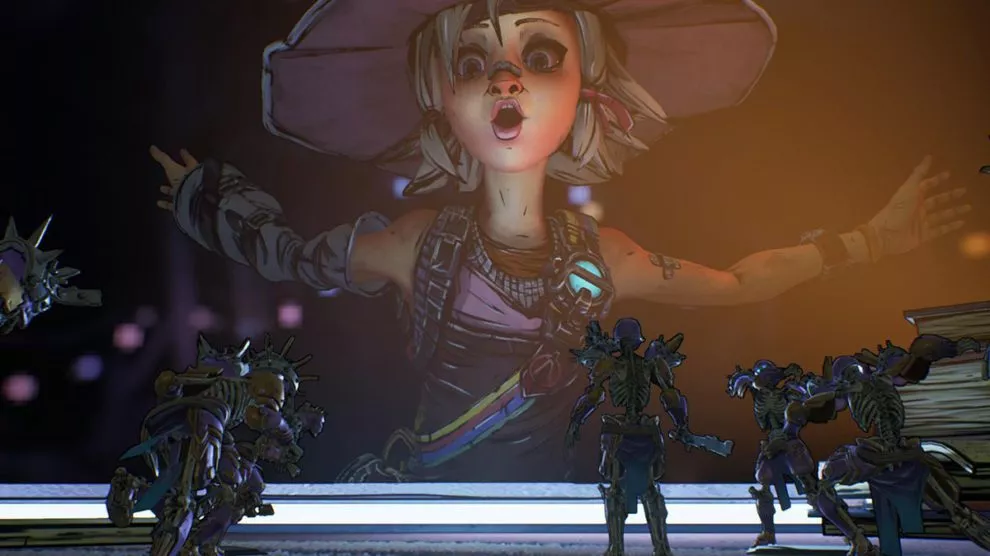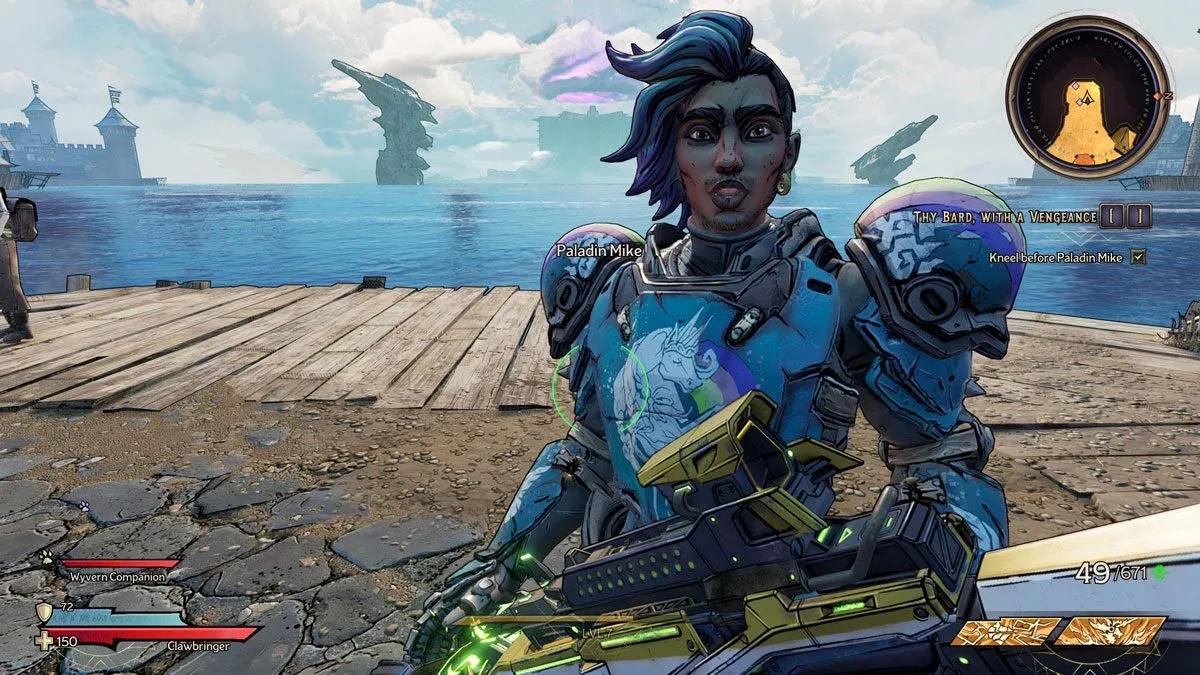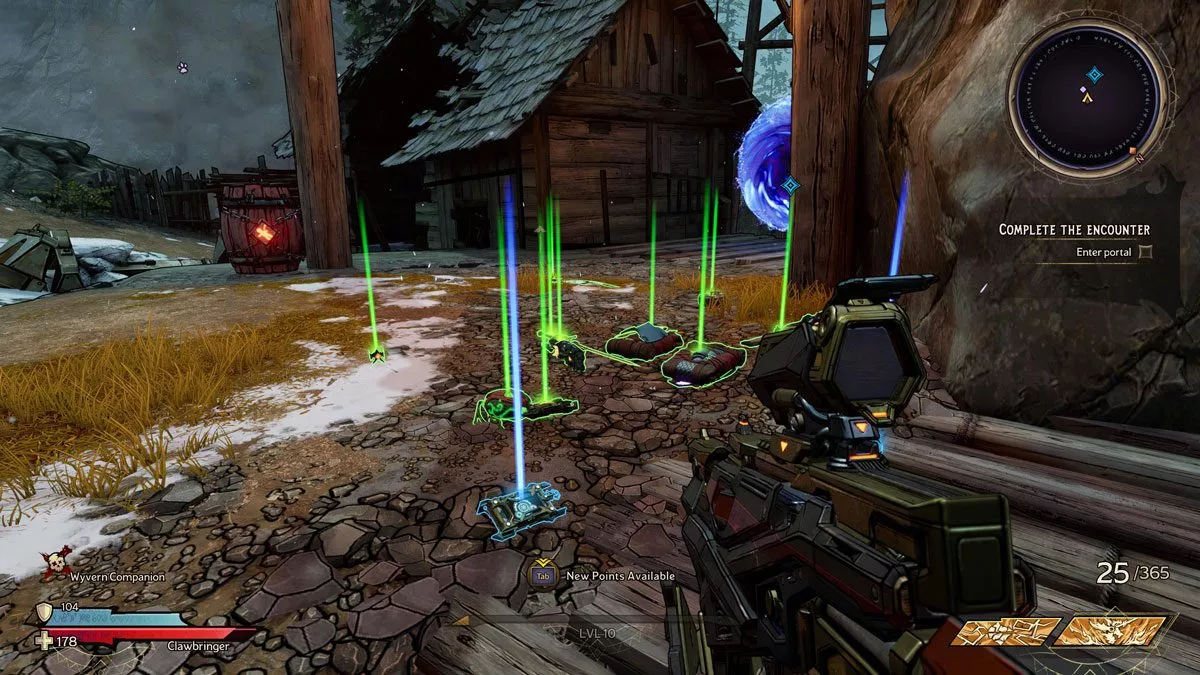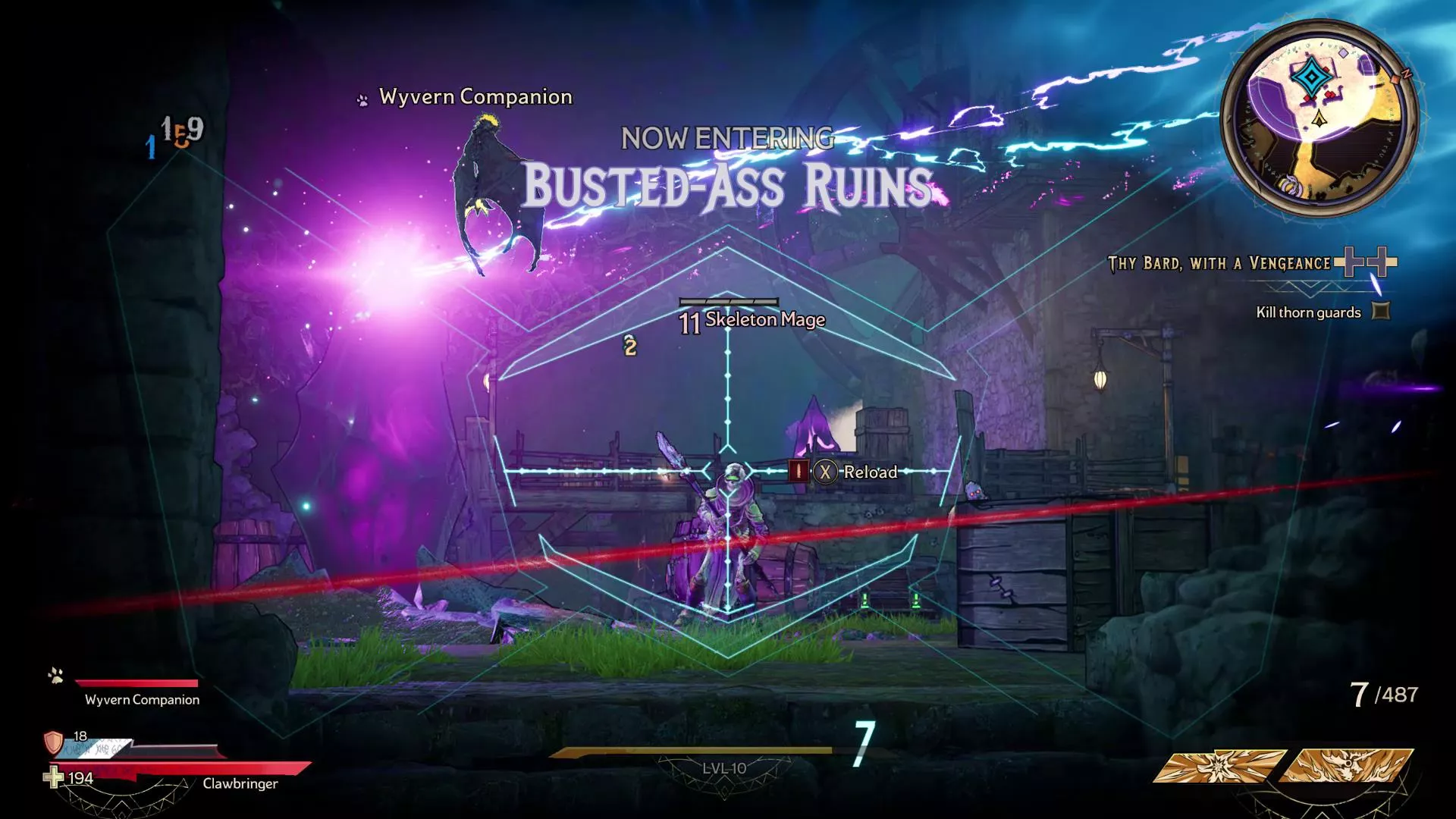Decent, yet repetitious gameplay coupled with some toilet humour? Maybe.
Tiny Tina’s Wonderlands is decidedly part of the Borderlands franchise, a fully-fledged title that owes its existence to a piece of DLC found within Borderlands 2. While taking on a name of its own, it still shares the same mechanics and humour of titles of old, love or hate ‘em.
Voiceover queen Ashly Burch takes centre stage as the titular Tiny Tina, a loveable rascal who lives vicariously through a rousing game of Dungeons and Dragons – erm, make that Bunkers and Badasses – with her friends Frette and Valentine, voiced by Hollywood elite Wanda Sykes and Andy Samberg, respectively. Regardless of humour, the trio do a terrific job, though Samberg is notably the weakest of the bunch. The group lead a cast of characters that is remarkably diverse and full of queer representation, so bonus points for that.
Early on, the conversations between the three dungeon masters should give you an idea of whether Wonderlands’ humour is for you. Simply put, if you like what comes out of Claptrap’s mouth in Borderlands — or the idea of a unicorn called “Butt Stallion” — you’ll enjoy what’s on offer here. If you don’t, you’ll find that dialogue will become grating, and very quickly at that. An early boss starts calling you “cutie idiot” repeatedly as an example; it’s clearly meant to be funny and provide the boss with some character but it’s all too juvenile and superficial for me.
Wonderlands itself works on a couple levels. In the first, Tina and her companions will guide your player character from what we’ll call the real world. At this level you’re merely role-playing, commanded by your dungeon master to stay in character as she weaves an intricate tale of mystery and fantasy.
Inside the role-play proper, you’ll deal with not only obstacles created by Tina, Frette and Valentine – and those are plentiful, by the way – but unknown, unpredictable curveballs thrown by the Dragon Lord, a baddie played by (yet another Hollywood elite) Will Arnett. I found the Dragon Lord the most amusing and entertaining of the bunch, as he possesses a kind of self-awareness that likens him to Moriarty inside Star Trek The Next Generation’s holodeck.
The third and final layer comes in the form of Wonderlands’ Overworld, a sprawling map that not only connects the fantasy world’s main hubs but provides opportunities for enhancement and exploration. It also contains Final Fantasy-like random encounters that are visibly telegraphed, making them avoidable but nonetheless annoying if you find yourself cornered. That and general exploration are made more difficult by the Overworld’s wide-yet-tight camera, which makes it hard to see what’s going on around you.
Using the Overworld, players are tasked to work through main and side questlines, ensuring your player level is comparable to the marked levels of tasks before you. Even moving into the easiest of difficulty settings in solo play, being two or three levels below the marked encounter means you’re likely to fail from a couple strikes. Working with friends, you also can choose to take part in competitive or cooperative loot as with the Borderlands series to spice things up.
Cast as the Fatemaker, you’ll have six classes at your disposal. I went with the Clawmaker as my main, as Hamish had trialed the Stabbomancer and Graveborn in his preview. Said Clawmaker is an expert in elemental damage – fire and lightning, specifically – and comes complete with a dragon companion and Thor-like hammer. When you’re not shooting at baddies, you’ll use the Clawmaker’s specials including hammer strikes and throws and techniques including fireballs, eruptions and lightning strikes. Other classes are of course built differently and encourage a different style of play, be it close or ranged combat.
Shooting mechanics are wholesale Borderlands; as Hamish mentioned, grenades have been swapped out for spells but most other functionality remains the same. Get downed in an encounter and you’ll have a small window to eliminate a nearby enemy to find a second life. Loot is plentiful – in all honesty, too plentiful – and you’ll be forced to stop progression multiple times throughout a single mission to slowly cursor over every drop that you come across. When a major enemy is felled, get used to a shower of items in various colours and shapes; trying to figure out what’s what in these circumstances is usually more difficult than the boss battle itself.
Another issue with loot is that because it’s so abdundant, you’ll frequently find your inventory is maxed out; mine almost always was. Onscreen pop-ups will constantly be feeding you information about the loot you earn and have kept; most of the time, I would find that any item was 50% better and 50% worse than what I had equipped.
If you’re finding that too much of the loot littered around you is coming up with red comparison stats, you can head into missions and the Overworld alike to find collectibles; the more Lucky Dice you obtain, the higher chance you have to be lucky when it comes to drops. The constant deluge of loot may be quite appealing to some, but for me it quickly became a source of contention, something I had to constantly and meticulously manage.
Wonderlands has some tight shooting mechanics, but I find myself drawn towards proceedings with a weightier like in Destiny 2. In this, weapons feel light and airy — though spells admittedly have some heft — and aiming down the sights to continually get notifications of critical hits stops having any meaning when you’re barely whittling down a baddie’s health bar. In solo play, you’re constantly shooting whilst always keeping an eye on both of your character cooldowns to spam as soon as they’re ready; they’re always needed. Enemies look different, but largely feel the same. Half will bumrush you and the other half will try to take you out at range.
Combat is the focal point of small discoverables and random encounters in the Overworld — in these, you’re generally locked within one or two encounter arenas of a finite size; it’s a matter of thinning the horde until a progress bar is satisfied. While it may differ when playing in a group, its gameplay loop feels small and repetitious when alone: encounter, second encounter, loot chest, portal.
In main missions, this can also be the case, but you’re generally able to let loose in a larger area. Understanding how main mission encounters worked, I found myself running through as many small battles as possible when not locked into a kill room; checkpoints are numerous and you can use them to your advantage, especially with this tactic. The downside to running straight to objective markers rather than engaging in combat wherever possible was that I wasn’t earning as much XP as if I massacred everyone around me. Therefore, I started to find myself underlevelled for my next set iof quests; hence, it was back to the grind… in more ways than one.
The variety of each of Wonderlands‘ six classes, combined with a deficit in mission difference, means you’ll have a much better experience with friends. While its style of humour an emphasis on mountains and mountains of loot doesn’t connect with me, I can see why it would appeal to those who enjoy Borderlands‘ comedic stylings, charm and systems. The ability to engage in a relatively simple gameplay loop that provides loot aplenty and good times through an active endgame will also tick boxes for many — ideally, whilst playing in groups of likeminded folk.
Tiny Tina’s Wonderlands heads to Windows PC, Xbox One, Xbox Series S, Xbox Series X, PS4 and PS5 on 25 March.
Tiny Tina’s Wonderlands was reviewed using a promotional code on Windows PC via the Epic Games Store, as provided by the publisher. Click here to learn more about Stevivor’s scoring scale.
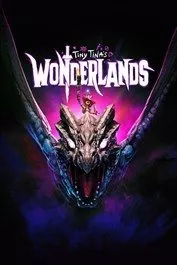 |
Tiny Tina's Wonderlands25 March 2022PC PS4 PS5 Xbox One Xbox Series S & X
|
This article may contain affiliate links, meaning we could earn a small commission if you click-through and make a purchase. Stevivor is an independent outlet and our journalism is in no way influenced by any advertiser or commercial initiative.





